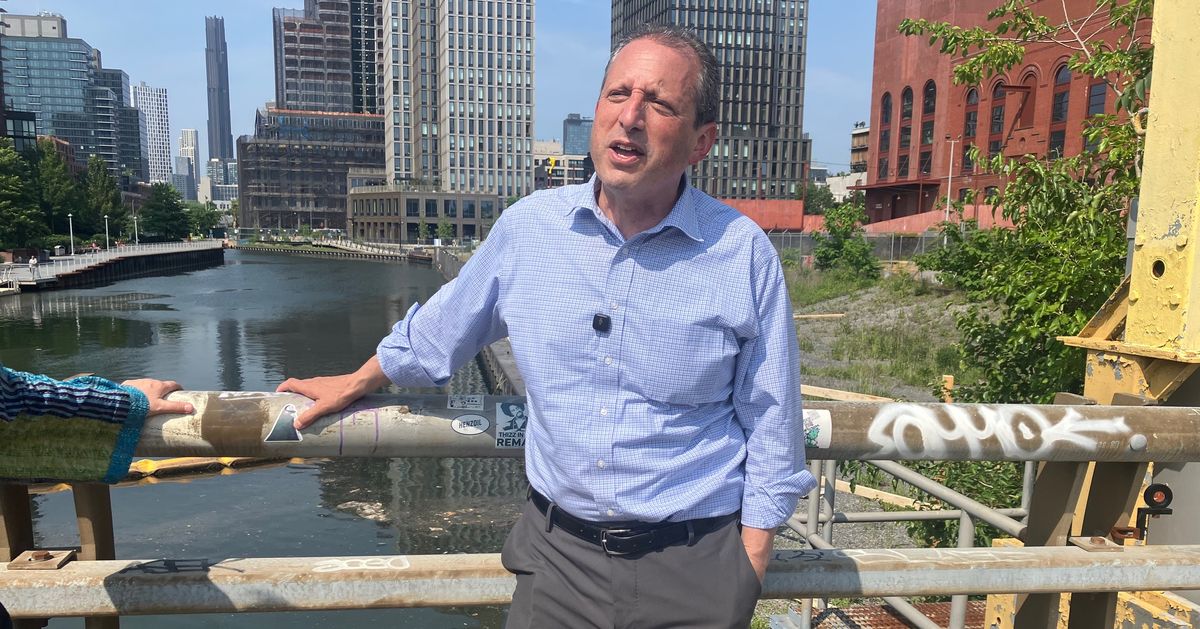Brad Lander, New York City’s comptroller and former mayoral hopeful, may not have secured the city’s top job, but his impact on Gowanus speaks volumes. This article delves into Lander’s ‘Gowanus victory lap,’ exploring how his rezoning initiative has transformed the neighborhood and what lessons it holds for future mayoral candidates.
Lander’s approach in Gowanus focused on integrating new development with community needs, tackling environmental concerns, and prioritizing affordable housing. His commitment to granular policy details and community engagement offers a potential roadmap for effective urban development and political success.
This piece examines the key elements of Lander’s Gowanus rezoning, from stormwater management to the inclusion of artist studios, and analyzes how these strategies resonate with voters and shape the narrative of a modern mayoral campaign.
The Gowanus Rezoning: A Model for Urban Development?
The Gowanus rezoning, spearheaded by Brad Lander, aimed to transform a formerly industrial area into a mixed-use neighborhood with a focus on affordability and sustainability. This initiative, approved in 2021, is projected to bring approximately 8,500 new housing units to the area, with a significant portion designated as affordable.
According to Kim Velsey, Curbed’s real-estate reporter, Lander emphasized the importance of capturing stormwater runoff with each new building in the neighborhood. This focus on environmental resilience demonstrates a commitment to long-term sustainability, addressing a key concern for many New Yorkers. ‘With each new building taking care of its own runoff, and these two huge tanks behind us picking up the slack, the Gowanus Canal would be spared the putrid mix of sewage, rainwater, and gutter swill,’ Velsey writes.
The rezoning plan also incorporated community benefits such as funding for NYCHA repairs and the creation of affordable artist studios, showcasing a holistic approach to urban development that prioritizes the needs of existing residents and fosters a vibrant cultural scene.
Prioritizing Affordable Housing in a Gentrifying Neighborhood
One of the central tenets of Lander’s Gowanus rezoning was the commitment to creating and preserving affordable housing. In a rapidly gentrifying neighborhood, ensuring housing opportunities for low- and moderate-income residents is crucial for maintaining socioeconomic diversity and preventing displacement.
The rezoning plan mandates that new developments include a minimum percentage of affordable units, with some projects, like Gowanus Green, reaching 100% affordability. This approach aims to counteract the pressures of market-rate development and provide stable housing options for a range of income levels.
Lander highlighted the importance of this aspect, stating, ‘You can’t have this gleaming new housing here and then these crazy old units there.’ By linking rezoning efforts to public housing improvements, Lander sought to address historical inequities and ensure that all residents benefit from the neighborhood’s transformation.
Community Engagement: A Cornerstone of Lander’s Approach
Brad Lander’s success in Gowanus can be attributed, in part, to his emphasis on community engagement. Throughout the rezoning process, he actively sought input from local residents, community organizations, and tenant leaders, ensuring that their voices were heard and their needs were addressed.
Michelle de la Uz, executive director of the Fifth Avenue Committee, noted the extensive efforts to incorporate community provisions into the rezoning plan, including NYCHA repairs, stormwater-management regulations, and measures to support neighborhood artists.
Karen Blondel, a NYCHA tenant organizer, praised Lander’s commitment to listening and collaborating with tenants, stating, ‘I was sitting with Brad and two other tenant leaders looking over the physical-needs assessments, and you could tell he was listening.’ This level of engagement fostered trust and buy-in from the community, contributing to the overall success of the rezoning initiative.
Addressing Environmental Concerns: Cleaning Up the Gowanus Canal
The Gowanus Canal, a Superfund site, has long been a symbol of environmental neglect and industrial pollution. Lander’s rezoning plan recognized the importance of addressing these environmental concerns and incorporating sustainable practices into new development.
In addition to requiring stormwater management, the plan also includes measures to mitigate toxic vapors and remediate contaminated sites. These efforts aim to protect public health and transform the canal from a liability into an asset for the community.
Andrea Parker of the Gowanus Canal Conservancy expressed delight in seeing Lander, highlighting the collaborative efforts to improve the canal’s condition and create a more sustainable neighborhood. This focus on environmental stewardship demonstrates a forward-thinking approach to urban development that aligns with the values of many New Yorkers.
Lessons for Future Mayoral Candidates
Brad Lander’s experience in Gowanus offers valuable lessons for future mayoral candidates. His focus on detailed policy, community engagement, and sustainable development provides a potential roadmap for addressing the complex challenges facing New York City.
By prioritizing affordable housing, environmental resilience, and community benefits, Lander demonstrated a commitment to creating a more equitable and sustainable city. This approach resonated with voters and helped him build a strong base of support in Gowanus and beyond.
While Lander’s mayoral campaign may not have been successful, his legacy in Gowanus serves as a reminder of the power of local leadership and the importance of addressing community needs in urban development initiatives.
Conclusion: A Gowanus Blueprint?
Brad Lander’s ‘Gowanus victory lap’ showcases the potential for urban rezoning to serve as a catalyst for community development, environmental remediation, and affordable housing creation. His meticulous approach to policy, paired with genuine community engagement, underscores a viable path for future mayoral candidates aiming to tackle New York City’s multifaceted challenges.
The lessons gleaned from Lander’s Gowanus initiative extend beyond the neighborhood’s borders. As New York City navigates its future, the principles of sustainable development, community-driven decision-making, and equitable housing solutions remain paramount. Whether future mayoral candidates adopt Lander’s exact blueprint or chart their own course, the emphasis on detailed policy and public involvement will likely prove crucial for success.
Ultimately, Lander’s work in Gowanus underscores the enduring impact of local leadership and the critical importance of addressing community needs in urban development. Even without securing the mayoral seat, his influence on the fabric of New York City remains palpable, offering a potential framework for those who aspire to lead the city in the years to come.

Leave a Reply